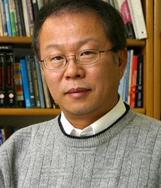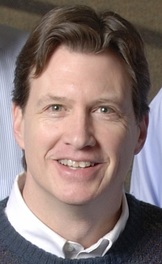Keynote Speakers

Professor Jun Ho Oh
Director of Humanoid Robot Research Center
Lecture Title: Recent Developments in Bipedal Humanoid Robots (TBC)
Synopsis
What happened at the Darpa Robotics Challenge?
The DARPA Robotics Challenge, which was motivated by nuclear disaster at Fukushima, Japan, in 2011, consisted of increasingly demanding two competitions, DRC trail and DRC final, over two years. The goal was to accelerate progress in robotics for humans and mitigate the impacts of natural or man-made disasters. The DRC Finals competition challenged participating robotics teams and their robots to complete a difficult course of eight tasks relevant to disaster response, among them driving alone, walking through rubble, tripping circuit breakers, turning valves and climbing stairs.
25 teams from worldwide participated in this demanding challenges but only three of them completed the mission in the specified time limit, one hour. Even the first place winner, team KAIST, took 44 minutes to complete. Many teams struggled a lot in operating their robots. Most of the robot experienced real ‘disastrous’ situation as falling down before entering the disaster scene or during the tasks. Some of them were from mechanical failure; the others were from operator’s mistakes or from bipedal walking difficulties, etc.
Prof. Jun Ho Oh will review the DRC final process and discuss about what the difficulties were, what happened and what we learned from the challenge. He will also explain some details and winning strategy about the robot ‘DRC Hubo’.
"This is the end of the DARPA Robotics Challenge but only the beginning of a future in which robots can work alongside people to reduce the toll of disasters," - Arati Prabhakar, DARPA Director
Biography
Prof. Jun Ho Oh received his B.S. and M.S. degree from Yonsei University, Seoul, Korea in 1977 and 1979, respectively. After short working at Korea Atomic Energy Research Institute as a researcher from 1979 to 1981, he received Ph.D. degree in mechanical engineering in the field of automatic control at U.C., Berkeley in 1985. He is now a distinguished professor of mechanical engineering and the director of Humanoid robot research center (Hubo Lab) at Korea Advanced Institute of Science and Technology (KAIST).
He performed many industry and government research projects in motion control, sensors, microprocessor applications, and robotics, etc. He is especially interested in mechatronics and system integration. In the recently ten years, he completed unique humanoid robot series KHR-1, KHR-2, Hubo and Hubo 2. And he also developed Albert Hubo and Hubo FX-1. Recently, he leaded team KAIST and won Darpa Robot Challenge final as first place at Pomona, Ca, USA in 2015. He is currently studying to improve the performance of humanoid robot for faster and more stable walking, robust robot system integration and light weight design, etc. He is a member of ASME and IEEE. And he also is the member of the National Academy of Engineering of Korea.
Director of Humanoid Robot Research Center
Lecture Title: Recent Developments in Bipedal Humanoid Robots (TBC)
Synopsis
What happened at the Darpa Robotics Challenge?
The DARPA Robotics Challenge, which was motivated by nuclear disaster at Fukushima, Japan, in 2011, consisted of increasingly demanding two competitions, DRC trail and DRC final, over two years. The goal was to accelerate progress in robotics for humans and mitigate the impacts of natural or man-made disasters. The DRC Finals competition challenged participating robotics teams and their robots to complete a difficult course of eight tasks relevant to disaster response, among them driving alone, walking through rubble, tripping circuit breakers, turning valves and climbing stairs.
25 teams from worldwide participated in this demanding challenges but only three of them completed the mission in the specified time limit, one hour. Even the first place winner, team KAIST, took 44 minutes to complete. Many teams struggled a lot in operating their robots. Most of the robot experienced real ‘disastrous’ situation as falling down before entering the disaster scene or during the tasks. Some of them were from mechanical failure; the others were from operator’s mistakes or from bipedal walking difficulties, etc.
Prof. Jun Ho Oh will review the DRC final process and discuss about what the difficulties were, what happened and what we learned from the challenge. He will also explain some details and winning strategy about the robot ‘DRC Hubo’.
"This is the end of the DARPA Robotics Challenge but only the beginning of a future in which robots can work alongside people to reduce the toll of disasters," - Arati Prabhakar, DARPA Director
Biography
Prof. Jun Ho Oh received his B.S. and M.S. degree from Yonsei University, Seoul, Korea in 1977 and 1979, respectively. After short working at Korea Atomic Energy Research Institute as a researcher from 1979 to 1981, he received Ph.D. degree in mechanical engineering in the field of automatic control at U.C., Berkeley in 1985. He is now a distinguished professor of mechanical engineering and the director of Humanoid robot research center (Hubo Lab) at Korea Advanced Institute of Science and Technology (KAIST).
He performed many industry and government research projects in motion control, sensors, microprocessor applications, and robotics, etc. He is especially interested in mechatronics and system integration. In the recently ten years, he completed unique humanoid robot series KHR-1, KHR-2, Hubo and Hubo 2. And he also developed Albert Hubo and Hubo FX-1. Recently, he leaded team KAIST and won Darpa Robot Challenge final as first place at Pomona, Ca, USA in 2015. He is currently studying to improve the performance of humanoid robot for faster and more stable walking, robust robot system integration and light weight design, etc. He is a member of ASME and IEEE. And he also is the member of the National Academy of Engineering of Korea.

Dr Giovanni Cherubini
IBM Zurich Research Laboratory, Switzerland
Lecture Title: Advanced Mechatronic Systems for Tape Drives
Affiliation: IBM Research
Giovanni Cherubini received a Laurea degree (summa cum laude) from the University of Padova, Italy, in 1981, and M.S. and Ph.D. degrees from the University of California, San Diego, in 1984 and 1986, respectively, all in Electrical Engineering. Since 1987 he has been with the IBM Research Laboratory in Zurich, Switzerland. His research interests comprise high-speed data transmission, data storage, and control systems. He was co-editor of the IEEE 100BASE-T2 Standard for Fast Ethernet transmission over voice-grade cables. More recently, he contributed to the realization of the first atomic-force-microscope-based data-storage prototype. He is currently focusing on advanced servo-control technologies for tape drives and on storage techniques targeting big data applications.
Dr. Cherubini holds over 60 patents in the areas of communications, data storage, and control systems, was named Fellow of the IEEE in 2006, and Master Inventor at IBM in 2009. He served as Editor of the IEEE Transactions on Communications, and as Guest Editor of the IEEE Journal on Selected Areas in Communications and of the IEEE Transactions on Control Systems Technology. He is currently Associate Editor of the IEEE Transactions on Control Systems Technology and Technical Editor of the IEEE/ASME Transactions on Mechatronics. He was co-recipient of the 2003 Leonard G. Abraham Prize Paper Award of the IEEE Communications Society, the 2009 IEEE Transactions on Control Systems Technology Outstanding Paper Award, the 2009 Control Systems Technology Award of the IEEE Control Systems Society, the 2011 IBM Research Pat Goldberg Memorial Best Paper Award, and the 2014 Industrial Achievement Award of the International Federation of Automatic Control. In 2013 he received an IBM Corporate Award for Tape Technology Leadership for his contributions to Linear Tape Open and Enterprise tape drives.
IBM Zurich Research Laboratory, Switzerland
Lecture Title: Advanced Mechatronic Systems for Tape Drives
Affiliation: IBM Research
Giovanni Cherubini received a Laurea degree (summa cum laude) from the University of Padova, Italy, in 1981, and M.S. and Ph.D. degrees from the University of California, San Diego, in 1984 and 1986, respectively, all in Electrical Engineering. Since 1987 he has been with the IBM Research Laboratory in Zurich, Switzerland. His research interests comprise high-speed data transmission, data storage, and control systems. He was co-editor of the IEEE 100BASE-T2 Standard for Fast Ethernet transmission over voice-grade cables. More recently, he contributed to the realization of the first atomic-force-microscope-based data-storage prototype. He is currently focusing on advanced servo-control technologies for tape drives and on storage techniques targeting big data applications.
Dr. Cherubini holds over 60 patents in the areas of communications, data storage, and control systems, was named Fellow of the IEEE in 2006, and Master Inventor at IBM in 2009. He served as Editor of the IEEE Transactions on Communications, and as Guest Editor of the IEEE Journal on Selected Areas in Communications and of the IEEE Transactions on Control Systems Technology. He is currently Associate Editor of the IEEE Transactions on Control Systems Technology and Technical Editor of the IEEE/ASME Transactions on Mechatronics. He was co-recipient of the 2003 Leonard G. Abraham Prize Paper Award of the IEEE Communications Society, the 2009 IEEE Transactions on Control Systems Technology Outstanding Paper Award, the 2009 Control Systems Technology Award of the IEEE Control Systems Society, the 2011 IBM Research Pat Goldberg Memorial Best Paper Award, and the 2014 Industrial Achievement Award of the International Federation of Automatic Control. In 2013 he received an IBM Corporate Award for Tape Technology Leadership for his contributions to Linear Tape Open and Enterprise tape drives.

Tom Statchel
Principal Staff Engineer in the Motorsports Technology Group at MTS Systems
Lecture Title: Accelerating the vehicle development process with hybrid simulation
Synopsis
Employing advanced simulation techniques such as Mechanical Hardware in the Loop (mHIL®) throughout vehicle development program enhances efficiency by enabling both meaningful objective and subjective evaluation at both the component and vehicle levels earlier in the development process. This minimizes expensive, time-consuming rework in the validation phase and reduces the number of prototypes required for development and system validation.
Biography
Thomas Stachel is a Principal Staff Engineer in the Motorsports Technology Group at MTS Systems. Thomas worked on the research and development of real time controls for the aerospace industry before coming to MTS. While at MTS he has focused on the development of systems for the vehicle dynamics market. These systems include the K&C, Dynamic K&C, a Roadway for ride and comfort evaluation and various drive train systems for both the OEM and motorsport markets. More recently he has been responsible for the development of hybrid simulation technologies, combining real time simulation with physical testing known as mechanical Hardware in the Loop or mHIL. mHIL technology has been successfully applied to a number of applications including damper, suspension, steering and chassis.
Principal Staff Engineer in the Motorsports Technology Group at MTS Systems
Lecture Title: Accelerating the vehicle development process with hybrid simulation
Synopsis
Employing advanced simulation techniques such as Mechanical Hardware in the Loop (mHIL®) throughout vehicle development program enhances efficiency by enabling both meaningful objective and subjective evaluation at both the component and vehicle levels earlier in the development process. This minimizes expensive, time-consuming rework in the validation phase and reduces the number of prototypes required for development and system validation.
Biography
Thomas Stachel is a Principal Staff Engineer in the Motorsports Technology Group at MTS Systems. Thomas worked on the research and development of real time controls for the aerospace industry before coming to MTS. While at MTS he has focused on the development of systems for the vehicle dynamics market. These systems include the K&C, Dynamic K&C, a Roadway for ride and comfort evaluation and various drive train systems for both the OEM and motorsport markets. More recently he has been responsible for the development of hybrid simulation technologies, combining real time simulation with physical testing known as mechanical Hardware in the Loop or mHIL. mHIL technology has been successfully applied to a number of applications including damper, suspension, steering and chassis.